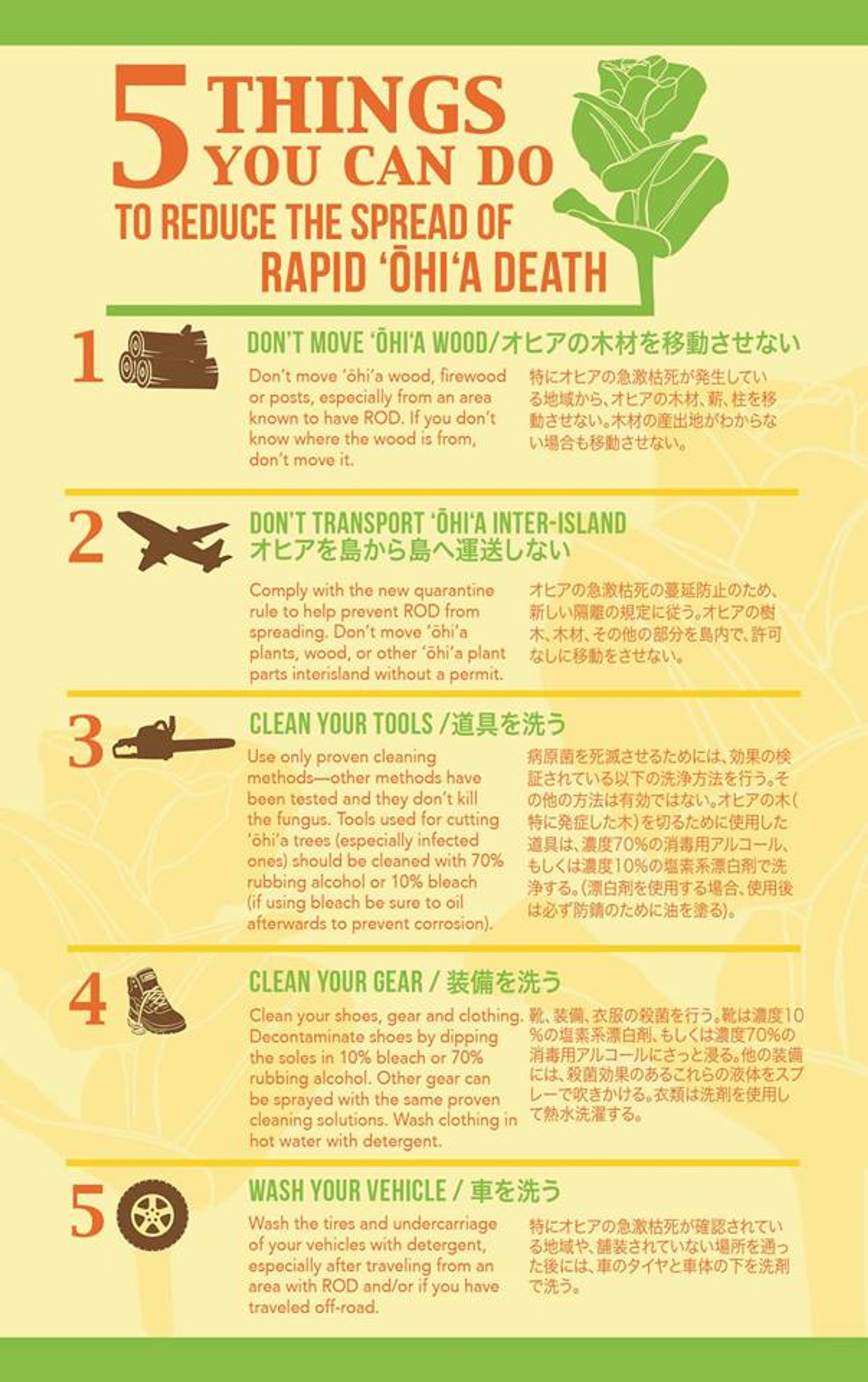Along the trail are well over 50 different species of native plants that prefer a wet mountain habitat. All are identified and illustrated in the pamphlet, Waihe`e Ridge Trail Native Plant Guide, available from the State Division of Forestry and Wildlife in Wailuku.
After the overlook of Makamakaka`ole Stream, begin looking for native `ohi`a. When first seen along Kanoa Ridge, they are good sized trees. By the end of the hike, they have become small shrubs, stunted by the exposed conditions higher up. `Ohi`a has oval, dull green leaves and clusters of delicate red, yellow, or salmon-colored flowers. Native birds, such as the `apapane, feed on the nectar and help with pollination.
Watch for `apapane in the forest canopy. It has a red breast and head, black wings and tail, and a slightly curved black bill. In flight the `apapane makes a whirring sound as it darts from tree to tree searching for insects and nectar.
On the series of short switchbacks look for kopiko, a native member of the coffee family. It has leathery, oblong leaves with a light green midrib. Turn the leaf over to see a row of tiny holes (piko [navel]) on either side of the midrib. The kopiko produces clusters of tiny white flowers and fleshy, orange fruits.
Also on the switchbacks listen for the Japanese bush warbler (uguisu), a bird often heard, but rarely seen. Its distinctive cry starts with a long whistle and then winds down in a series of notes. The bush warbler is olive brown on top with a white breast and a long tail.
On the upper section are two native ferns, `ama`u and hapu`u. You can tell them apart by the structure of their fronds. Those of `ama`u branch once before the green segments are attached to the stem. The fronds are red when young, gradually turning green with age. Hapu`u fronds branch several times before the green segments. Their fronds have a lacy, delicate appearance.




